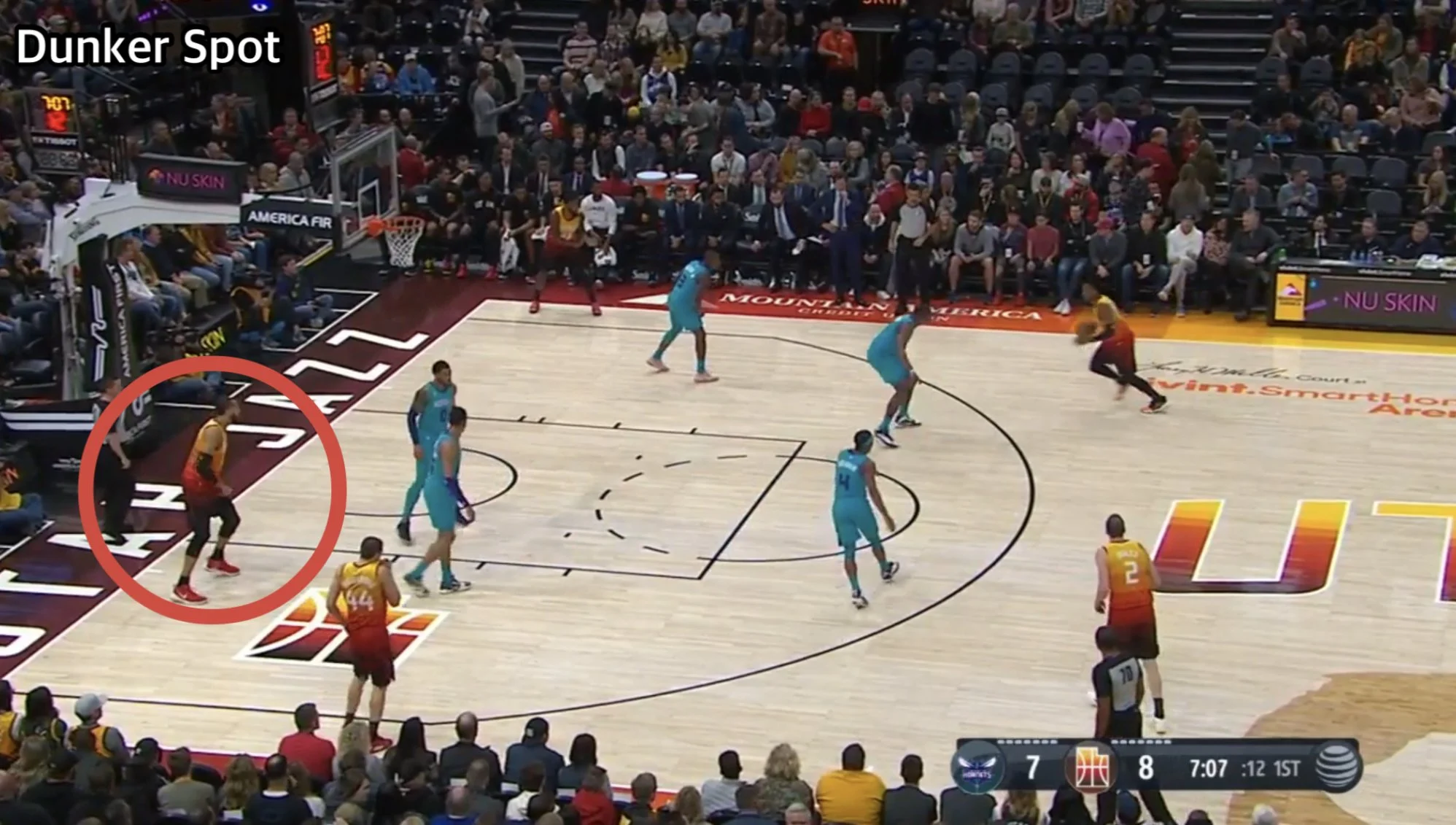The Value of Using the Dunker Spot
What is the Dunker SPot?
If you’ve watched the Milwaukee Bucks over the past few seasons, you may have noticed that they have transitioned from a mostly 5-out offensive team to a mostly 4-out team. For the past two seasons, they have primarily spaced four players along the perimeter, with the fifth player filling the “dunker” spot.
The “dunker” spot is the area along the baseline just outside of the lane, but not quite in the short corner. The dunker spot is typically filled by post players or non-shooters. Utilizing the dunker spot allows you to still play a traditional post player, while also creating as much space as possible for perimeter players to attack off the dribble.
The “dunker” spot is the area along the baseline just outside of the lane, but not quite in the short corner.
Setting Up in the dunker Spot:
Most coaches teach their post players to always fill the weak side dunker spot when they are not posting up and looking for an entry. Filling the weak side dunker creates space for the strong side players and pulls the lowest help defender away from the ball.
When setting up in the dunker spot, you want to have your “heels on the baseline.” Having your heels on the baseline ensures you are pulling your defender as low as possible. If the ball handler can get by his defender, the 2nd wave of help will have to travel that much further to contest. If the post player’s defender does step over and help on a dribble drive, the player filling the dunker can find a window to receive a pass and finish.
Gobert sets up in the dunker spot with his “heels on the baseline” and shows his hands.
Scoring from the dunker Spot:
If the attacking ball handler passes to the player in the dunker spot, he needs to do two things—meet the ball and “close the gate.”
Remember, the player in the dunker spot already has his heels on the baseline and hands ready. To meet the ball, the player in the dunker should step towards the pass with his inside foot (foot closest to the basket). Of course, perfect footwork isn’t always possible in an actual game scenario, but if possible we would like the player in the dunker to step towards the ball with his inside foot. Ideally, his inside foot is hitting the ground as he catches the pass.
The term “close the gate” refers to pivoting with your now planted inside foot to bring your outside foot around your body, so you are now parallel to the baseline. “Closing the gate” shields you from a contest, as the defender will now have to through your body to get to the ball.
Now that you’ve met the ball and “closed the gate,” it is time to finish at the rim. When finishing from the dunker spot you again have two options—explode up right away on the catch or be patient.
If you receive the pass in the dunker spot with no immediate help defender to contest (because they helped on the dribble drive), you should look to explode up right away and finish. However, if there is a defender within the area on the catch that can contest, you should look to be patient by pump faking or working to the other side of the rim to eliminate the shot blocker.
Reacting to Dribble Penetration From the Dunker SPot:
While the general rule of thumb is to stay positioned in the weak side dunker spot when possible, there are scenarios in which the post player will have to react to dribble penetration and relocate.
Drive from the Top:
5 staying positioned in the weak side dunker spot creates space and allows 1 to attack the outside double gap from the slot/top of the floor. If 1 drives middle and his drive is pushed outside of the lane or towards 5’s side, he should “loop” and relocate in the weak side dunker looking for a passing window.
Drive from the Wing or Corner:
If the ball is driven baseline from the wing or corner, 5 should cut to the “logo” or the restricted area in the middle of the paint. This creates a better angle for him to receive a pass from 2, in addition to allowing 2 to hit 3 in the corner or “nash” dribble through to the opposite side. If the ball is driven middle from the wing or corner, 5 can stay positioned in the weak side dunker until the drive gets pushed out of the lane towards his side. If this happens he should “loop” to the weak side.







